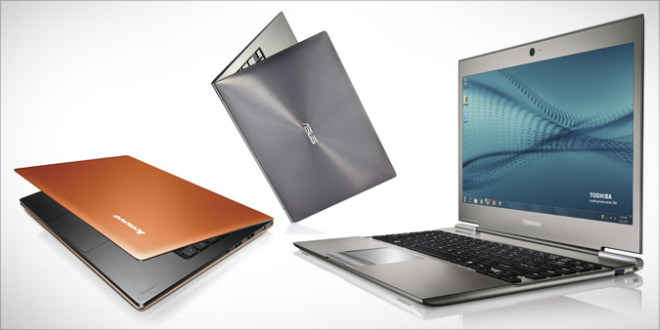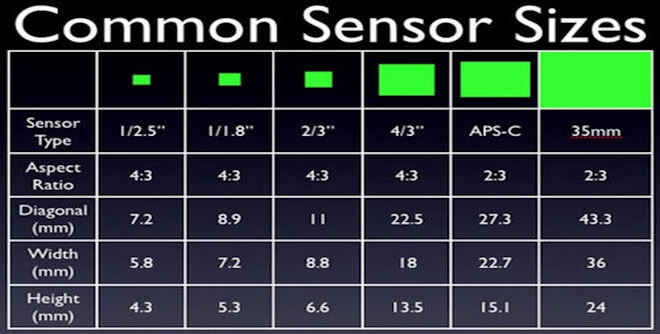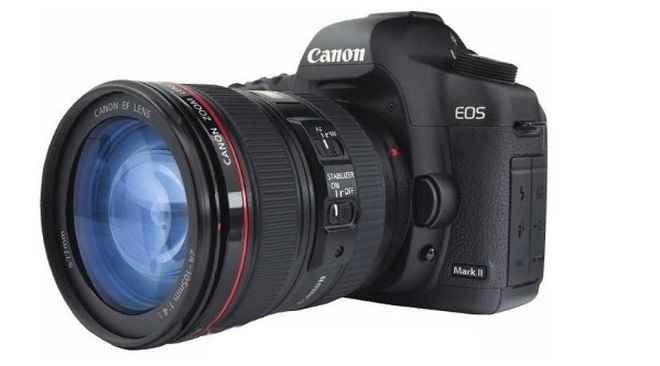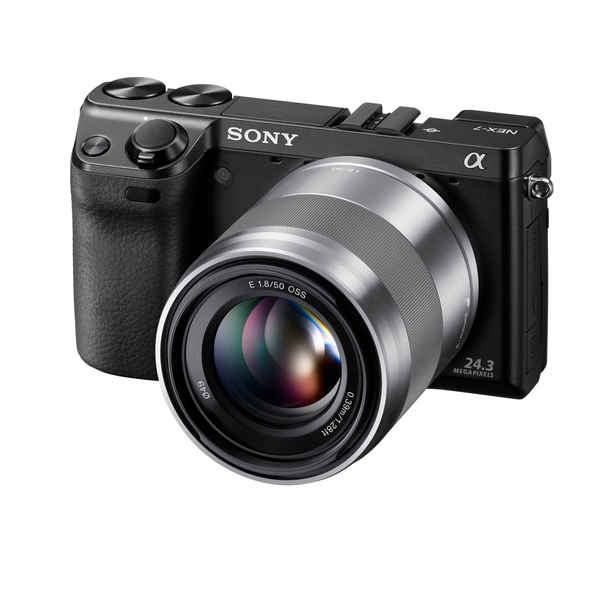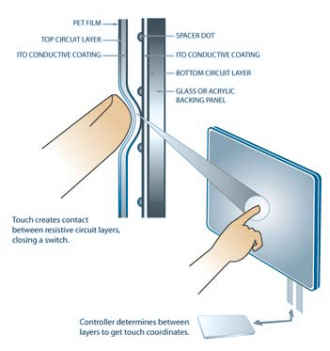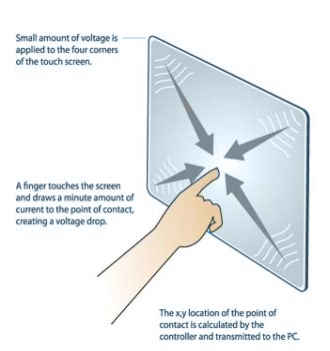50 shopping mistakes to avoid this Diwali

With the onslaught of product launches these days, we have compiled a handy check-list for you that should get you through your entire shopping experience safe and sound.
We have complied a check-list for you that should come in real handy this shopping season since the market will be flooded with many products bound to make things a bit confusing. We have further categorized this check list into 4 categories namely – Laptops, Phones, Cameras and Tablets. So lets get started:
LAPTOPS
- Touch Screen laptops are a mixed bag
Touchscreen laptops can be fun, they surely add a new dimension to the way you interact with the PC. But, not all touchscreens are the same in terms of quality,uniformity and response. In our testing experience we have come across quite a few touchscreen laptops with inconsistent touch-response and a whole pile of other issues; all because of an el-cheapo digitizer. Apart from the touch response, you also should be aware of the importance and real world usage of a touch screen for your work environment. If touchscreen is just a “nice to have” feature, we’d suggest you think twice before paying a premium for a touchscreen laptop. Touchscreen adds marginally to the weight, reduces battery life and can be expensive to replace in case of accident.
- Calling something an “ultrabook” doesn’t mean that it’s an “ultrabook”
Vendors are playing tricks on consumers by launching heavy, clunky laptops under the ultrabook umbrella. For something to qualify as an ultrabook, make sure it weighs less than 1.8kg, is running an Intel ULV processor (usually, the processor will have the suffix, U). More importantly, the laptop needs to be slim. Really slim.
- Touchpads: Size isn’t everything. Accuracy is.
Unfortunately, the size of the touch pad does not guarantee a good, responsive experience. In fact, buggy implementation (especially drivers) can cause serious problems (read: an erratic pointer), especially when it comes to multi-touch gestures. Make sure you try the touchpad before purchase; play a game of solitaire, browse the web, see if you can scroll comfortably and so on.
- SSDs vs HDDs? SSDs win. Hands down
Given a choice between a 500GB hard disk drive or a 128GB SSD, we’d suggest you blindly choose the SSD option. The reason for this is simple, SSDs are more sturdy and more secure (TRIM) and will dramatically boost your battery life. External HDDs are cheap and numerous, cloud storage and streaming also mean that you don’t need to lug around that much data anymore.
- Slim and sexy with a catch
The current gen slim and light laptops and ultrabooks come with a promise of minimal compromise on performance, and technically they do offer a truck load of performance and battery efficiency for their size and weight. The reduction in price does come at a price though. Slimmer, compact machines end-up cutting down on the cooling system by reducing the fan size and the heat sink area, putting more pressure on fewer components. The end result can be a laptop that will scald your legs or annoy the hell out of you with a noisy fan. Of course, some laptops are better designed than others, but you’ll need to check for yourself before you pick one up. Your lap and ears will thank you.
- Check for upgradability
Laptops are usually quite limited when it comes to their hardware, a side-effect of their form factor. Regardless, it’s always good when you have the option to upgrade at a later date. Either in the form of an extra RAM slot or even an extra HDD bay.
- Just because you have a GPU doesn’t mean that you can game
The fact that a gaming laptop needs a good GPU is a given, but you must remember that there are other factors to consider as well. A laptop that’s too slim and/or not well-ventilated will overheat, a native resolution that’s too high will ruin your game and the lack of an SSD will teach you the virtues of patience.
- Windows 8 laptops, better try before you buy
The new Windows 8 UI has so far managed to create more foes than fans, and there is a good reason behind that accomplishment. The new UI is more suited for touchscreens and a tablet experience rather than for desktop/workstation use. If you have been blindly upgrading to subsequent versions of Windows, Windows 8 will hardly make you feel at home. The learning curve can be steep. Beware.
- Power users, choose non-reflective screens to avoid eye strain
The move towards reflective, glossy laptop screens by the industry has more to do with covering up crappy TN panels with reflective glass than to hide the low contrast and poor color fidelity. Glossy screens induce reflections and glare that adds strain on your eyes during prolonged use. Apart from the strain, glossy screens suffer from poor visibility in brightly lit and outdoor work environments. Non- reflective, matte screens offer better panel brightness and are easier on the eyes. Of course, many screens, notably those on the MacBooks, come with anti-glare coatings.
- The right resolution
Picking the right resolution for a laptop is tricky business. A lower resolution screen means less load on the GPU and improved battery life, but the trade-off is a (comparatively) blurry display. For smaller screens, below 13”, this is fine. Higher-resolutions work best on larger screens.
- No amount of sorcery can make a laptop sound as good as a home theatre, don’t believe those fancy stickers
Laptops claim “Dolby” surround sound, some of them even manage to integrate “woofers” underneath the chassis. All that razzmatazz seldom translates to good quality sound, though, honestly speaking, Dolby certified speakers are generally better than the average speakers, though.
CAMERAS
- Aperture Range is as important as the starting Aperture itself
Did the salesman just show you a camera for 15K with an aperture of f/2.8? Did that get you incredibly excited, almost enough to flop that cash at the checkout counter? Don’t. That f/2.8 will quickly change to a black-hole like f/4.8 (or worse) and you’re better off trying to sketch the scene than photographing it at this aperture. Go for a camera which has a smaller aperture number printed on it, something like f/1.8-2.8.
- Forget Megapixels, check the sensor size
The worst is probably when a salesman will try to pawn off a camera to you by saying “sir, this has more megapixels, it will give you better images.” You take that very camera and beat him with it, asking if the extra MPs caused extra hurt.
- AA batteries may be large, but they’re life savers
Custom lithium-ion batteries are great because they’re tiny, but guess what? You get rechargeable AA cells as well and if there is one thing that is the bane of any photographer, that is running out of charge at the wrong (or right) time. A slim, Li-ion battery might ensure that your camera is slim, but nothing beats the comfort of being able to purchase a fully charged battery off the shelf.
- Don’t get swayed by the Focus Points
If more focus points meant better focusing then we’d never miss a shot. What really matters is the area covered by those focus points and 45 focus points in the middle of the viewfinder means nothing vs. 11 scattered points. Also, it’s the number of cross-type points that matter since they’re the ones that do most of the hard work.
- Understand what makes a camera good in low light
We asked salespersons across various big retail chains to show us cameras that were good in low-light and none of them really knew. Rule of thumb, don’t trust the salesman. Read up about the various types of sensors and other factors that go into low-light photography.
- Wi-Fi, GPS? What’s it doing on my camera?
These gimmicky features makes us want to punch a baby seal. You don’t REALLY need Wi-Fi and GPS on your phone. Both the features drain your battery faster than a parched camel drinking at an oasis. It’s not like you can’t upload your images when you get home onto a computer. An hour’s worth of delay isn’t going to kill you, is it? Also, you do know where you took your shots right?
- Why the Entry-Level DSLR is not necessarily best for Beginners
We often come across people wanting to buy an entry level camera because “they’re just starting off.” It’s by far the worst excuse ever to justify the purchase. An entry-level DSLR might seem like a good option, but you’ll get over it sooner than you might think. Wait a few months and go semi-pro. You won’t regret it.
- The DSLR is king, the mirrorless the court jester
Its shameful just how salesmen often say that a mirrorless camera is inadequate when compared to an entry level DSLR. Nothing could be farther from the truth. Yes, their AF systems aren’t as evolved, and they may not have three dozen lens options to boot, but what you do get is an incredibly compact camera with the SAME image quality as that of an entry level DSLR. Yep, you read that right. The same quality. For most users, that’s more than they’ll ever need.
The Canon 5D Mark II DSLR
.
- Expensive lens does not mean better images
Just because you shelled out upwards of Rs. 80,000 on a lens doesn’t mean that it’s the most awesome lens in the world. Choose your lens wisely. Read reviews, consult a few experienced people if possible and more importantly, find a way to try a lens before buying it. Also, remember that a lens that costs Rs. 6,000 (The Canon EF 50mm f/1.8) for example, offers better quality than most lenses retailing at more than triple the price. Remember that a lens doesn’t determine your ability to take great pictures.
- The mysterious X (X zoom factor)
A point of frustration when trying to buy a camera is when salesmen say that a camera is better because it has a better “Zoom” factor (8x is better than 6X?). What they don’t tell you (or don’t know) is that the X factor is not an indicator of actual magnification but an indicator of the magnification that the lens is capable of from its base magnification.
- HD, Full HD, Ultra HD, Ultra Mega HOLYHELL HD Video
In our journey through various big store chains, many salesmen told us that some cameras recorded HD video and some did Full HD. When asked what the difference was, we were told that HD meant 720p while Full HD meant 1080p. You can argue about the merits of one over the other but just know this, forget the nonsense that’s spewing from that salesman, whip out your phone and Google the specs.
- The myth of the “All-in-One” lens
Many a times, we end up buying a DSLR and then don’t want to deal with the “hassle” of changing lenses often. Self-defeating purpose aside, the whole idea of an “all-in-one” lens comes to a grinding halt when you take into account several factors. They have terrible aperture ranges, horribly distort your images at all but a few focal lengths and are generally no better than what you would have got on a bridge camera anyway. Stay away
The Sony 50mm f1.8 lens mounted on the NEX-7
PHONES
- Unlock issues: Ensure it’ll work in India
Something you need to ensure when picking up a phone from abroad is the compatibility with the mobile networks in India. A lot of websites sell unlocked phones, mostly originating from the U.S. Market. Before placing the order, double check with the seller/website about the global network unlock status of the device.
- Quad-core on budget phone isn’t the best
There are a lot of smartphones available starting at Rs. 9,000 that boast of a quad-core processor. Don’t be fooled by them. Most of them are powered by a variant of the MediaTek MT 6589 chipset. Do your homework and check the device before purchasing. There are three variations of the chipset and you’ll need to know which one your phone has if you’re even hoping for decent performance.
- Platform loyalty doesn’t pay
Just because you’ve been a loyal customer for years doesn’t mean that you have to remain one for the rest of your life. Experiment, check out what’s new. Also, it’s very likely that many of your old favourites are now dead and dying brands.
- “Complete ecosystem” is overrated
We have heard it so many times now – “You already have a MacBook? You must get an iPhone for proper integration”. These are the kind of statements that are fallacious and don’t make any sense. And yes, this applies to whatever the geniuses may have to tell you about the other ecosystems – Google, Windows etc. In fact, almost all manufacturers are doing there best to ensure that you have a seamless transition to their platform anyway. It’s the apps that will cost you when you switch platforms.
- Memory woes: You’ll never get what’s advertised
This is a very important point to consider, especially if you’re planning on picking up a budget smartphone. The Canvas HD for example showcases 4GB built-in storage but lets you use a mere 1.77GB. Native apps that can’t be removed and more importantly, the OS itself, will hog the free memory. You’ll need to do a mental check of your data needs, add 2-4GB to that and purchase a phone accordingly. Having a microSD expansion slot is always a huge bonus.
- Buying from abroad? What about the warranty?
There’s something appealing in getting stuff from abroad at a discount. Remember that you might sacrifice the warranty though. Confirm with the manufacturer if you’re worried.
- Regular updates
Regular updates are essential for a fun, smartphone experience. It’s no fun when you’re stuck on ICS while the whole world is going gaga over JellyBean. Many companies are a bit lax when it comes to dishing out updates and some might even have a reputation for abandoning support for older products. Research well before you buy. Forums are a great source of such information.
- AMOLED vs. IPS vs. ClearBlack vs…..
Phones have such an assortment of displays and each one claims to be better than the last. As a rule of thumb, IPS panels are the best in terms of image quality, but only if they’re calibrated. OLEDs and AMOLEDs are the most vibrant due to their pitch black blacks, but they usually have a green colour cast. Standard LCD panels are cheap. Good ones are decent, bad ones, terrible.

iPhone 4 (Retina Display) vs Samsung Galaxy (Amoled Display)
- Aural prowess
It pays to listen to your future mobile phone’s speakers before you buy it. Many phones have some of the largest displays with the tinniest speakers ever made. Also remember that not all speakers are made the same and while some may have excellent treble, others might have improved bass (whatever little that can be managed from a speaker that measures 1cm across). Also, a speaker that is optimized for voices is more preferable in a mobile device. Call up a friend, have him talk to you and listen for clarity.
- Connectivity
Just because a phone has NFC, BlueTooth 4.0, 802.11ac and LTE support doesn’t meant that you must have it. The average person barely has access to 3G, let alone LTE and how many times have you transferred a file via Bluetooth or NFC that you so desperately need that feature? Sure, if you do need that feature then there’s no question that you must buy a device that supports such a feature, but if you don’t, don’t bother. Most of is nothing more than marketing mumbo-jumbo anyway.
- Plastic, metal or glass body?
Smartphones come in all shapes and sizes and also materials. Each type of material has its advantages and you shouldn’t dismiss any of them without due consideration. Plastic bodied phones are lighter and the panels are usually less prone to dents and scratches, given their flexibility. On the down side, the phones can feel cheap and might be flimsy to boot. Metal-bodied phones are ideal in terms of thickness and strength. However, very thin metal, as on the iPhone 5 will usually offer no better protection than a plastic bodied phone. Plus, metal looks really ugly when scratched. Glass bodied phones, such as the Nexus 4, while a pleasure to behold, are among the easiest phones to inadvertently damage. Choose wisely.
- Do your apps work on that?
Heavy Instagram user? Avoid BlackBerry, for example. Not all smartphone platforms offer the same selection of apps. You need to identify the apps critical to you, and check if the phone you’re going to buy lets you use them. Note that paid apps will have to be re-purchased if you’re shifting platforms.
- Want a stylus?
The stylus is not just an archaic touch-screen tool that’s still being pushed for use in modern devices. The stylus, while mostly useless on current phones, given the finger-friendly UI, is still a popular input device, particularly for large-screen phones. It offers greater precision, but unless you need it, it serves no functional purpose. Also, make sure that the phone you buy has some mechanism to store the stylus when not in use.
- Dealer vs. manufacturer’s warranty
Many of those lower-priced devices that you may find online will be backed by a seller/dealer warranty. This type of warranty is useless unless you know from experience that the seller is extremely reliable. Such phones (with the seller warranty) are a risk from the moment you buy them and all your servicing needs are dependent on a guy who you might never see ever again. Not all dealer warranties are bad, and also, whether you need the warranty or not depends on the discount you get. Massive discounts might be worth losing the warranty over. You’re the best judge.
- Scratch resistant screens
Many manufacturers pass of their screens as “scratch resistant” but remember, Gorilla glass is Gorilla Glass and many manufacturers skimp out on this (including such big names as Sony) and you won’t really be aware of the exact certification of the supposed scratch-resistant screen that you’ve got. In such a situation, a good scratch guard is a life-saver. Stock scratch-guards are usually bad and it’s best to get a reputed one for your screen.
TABLETS
- Do you need a camera on the tablet?
A common mistake people make while purchasing a tablet is that they look for a rear camera on the device. Are you really going to hold a 7-inch or 10-inch tablet in your hand to click a picture? What’s more important is the front facing camera, you’ll need it when you’re video chatting.
- Upgradable OS, OTA and certifications
Android receives annual updates as far as the OS is concerned. When purchasing a tablet, you should take a look at the manufacturer’s support for updates. If you’re picking up a tablet, check if it supports OTA (Over The Air) updates or you will have a lot of trouble with it in the future. Little known manufacturers might not even be certified by Google, meaning you won’t get access to the Play store.
- Just because you have a keyboard doesn’t mean you have a PC
A common mistake made by people is that they attach a keyboard to their tablet and think that it will work like a PC. Sure you may get a better typing experience but when it comes to office applications such as spreadsheets, nothing beats good old Windows or Mac. Plus, neither Android nor iOS is designed with a keyboard in mind. Of course, the Microsoft Surface might be a different beast altogether though.
- Screen quality – capacitive or resistive
The touchscreen is the most important component of a tablet as it’s your primary way of interacting with the device. While purchasing a tablet, always make sure it has a capacitive display instead of a resistive one. There are a variety of grades when it comes to capacitive displays. The good ones are smooth to interact with whereas the lower quality ones feel rough and don’t respond well. It’s always best to try the device for yourself before purchase.
Resistive vs Capacitive
- Manufacturers matter. Who else is going to provide support?
Companies like Samsung, Sony, Asus and more are trusted brands and people find it easier to purchase products from these brands as the after sales service is usually provided by the electronic store where you bought your device, or, these brands have their dedicated service centres. But when it comes to brands like Lava, Micromax, iBerry, Wicked- Leak and more, you may want to be careful before putting your money down. Make sure there is a service centre near you. One visit should tell you how user friendly the place is. We have heard instances where Micromax has great service in one city and really bad in another.
- Screen size vs the screen resolution
A common mistake that people make is in choosing a larger screen over a higher resolution. What really matters is the pixel pitch and what’s comfortable for your use. Anything over 300ppi is excellent and unless you legitimately need a 6” display on a tablet, don’t go for it.
- Slim form factor has its issues
Just because a tablet is slim doesn’t mean it’s awesome. As with laptops, a slimmer tablet means a slimmer battery and a hotter device. The build quality is also usually compromised. Don’t just go by hype.
- More expensive doesn’t mean the best
You will find tablets priced all the way from Rs.10,000 to Rs.50,000. Sure the iPad is still the king of tablets, but if you’re on a tight budget, you may get an impressive device for a lower budget. Tablets such as the Lava ETab Xtron Plus are priced under Rs.10,000 but are great at what they offer. Similarly, the first generation Nexus is still a great buy for Rs.14,000 when compared to the other Rs.15,000 tablets available in the market.
- 4:3 OR 16:9
If the myriad screen sizes weren’t confusing enough, choosing the right aspect ratio can also be a pain in the neck. Most tablets do come in the widescreen form-factor, but rare ones like the iPad still stick to the standard 4:3 format. The 4:3 format is the ideal resolution for reading and browsing, especially for browsing through photos. 16:9 is ideal for movies and videos. Also, bear in mind that on larger tablets, the 16:9 aspect ratio can be too cumbersome to use.
- SIM card doesn’t mean that the tablet can make calls
A common mistake people make is to assume that a tablet can make calls as well, despite the fact that you’ll look daft with a tablet plastered to your face. The SIM cards only work to provide you with direct internet access and nothing more. There are a handful of tablets that allow calling though.
- 3G USB dongle support
A common mistake people make while picking up a Wi-Fi only tablet is to check for a 3G USB dongle support. Most Android tablets support the popular 3G dongles available in India such as those from Reliance, Tata Photon, Huawei and more. However, there are some tablets that only support a particular 3G USB dongle. You can check the box or the manufacturers website for these details.
- Chargers and cables
This is a very common mistake that people make, believing that any charger will do for their device. Most of the time, tablets are provided with custom chargers due to the higher capacities of their batteries. You can’t just mix and match and assume that any charger is fine for your device. The power requirements will defer from device to device and you’d better be aware of what those requirements are. Slapping a 2.1A charger on a 7-in tablet might effectively kill the device.

